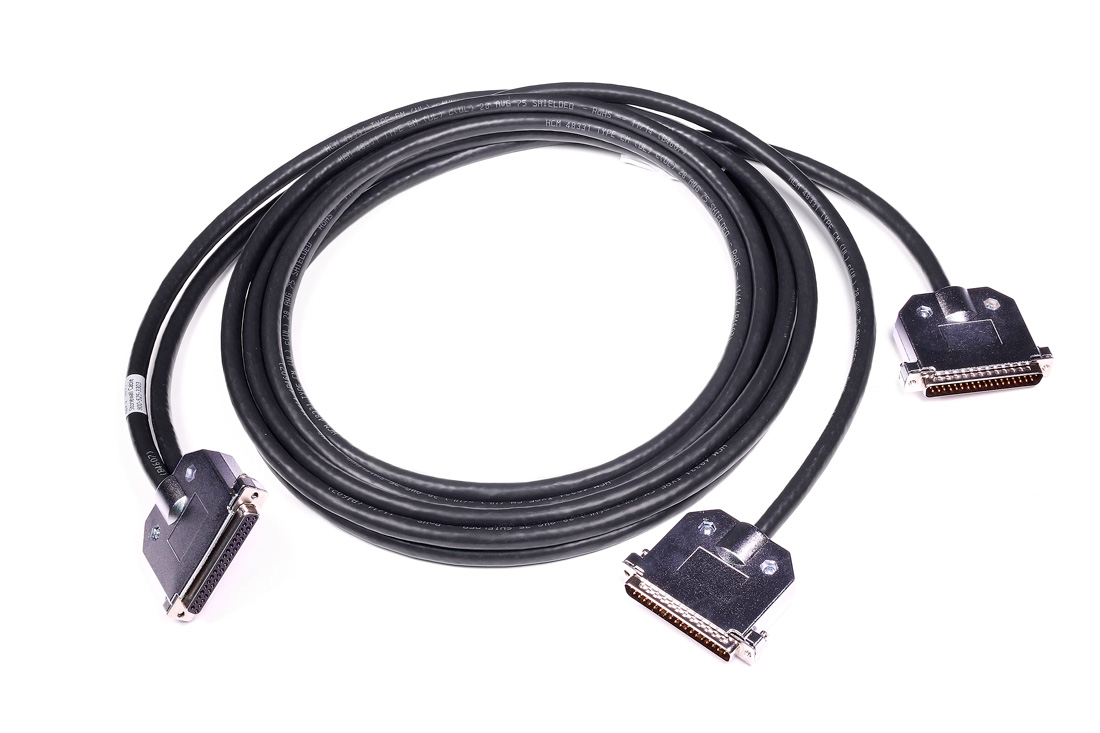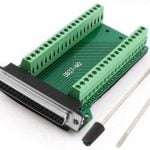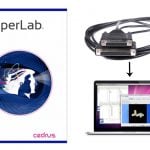Part #: CBLSTP-IO
Adapter Cable for SuperLab and STP-IO
Use CBLSTP-IO to connect both a SuperLab system and an STP-IO digital I/O breakout board simultaneously to the 37-pin connector of an STP100D or STP100C Isolated Digital Interface module.
One female 37-pin connector is attached to the back of the STP100D/C. Two male 37-pin connectors then provide one to connect to the STP-IO board and a second for the cable to the SuperLab system.
Use the STP-IO card on the back port of the STP100D/C to add the required jumpers; instructions are the same as UIM, just replace for “STP-IO”). If using the 37-pin interface for SuperLab, the CBLSTP-IO splitter cable will allow both SuperLab cabling and the STP-IO to be connected at the same time. The DB37 connector on the STP100C provides access to the full set of digital I/O.
The length of this “Y” cable is measured from tip to tip. The “Y” cable legs exit the DB37 male Common backshell and are jointly covered for the first three inches for extra strain relief. Please note this when determining a length for your application.
Details
Support
Knowledge Base
- * CLEANING GUIDELINES *
- About License Keys
- AC mode
- AcqKnowledge accuracy
- AcqKnowledge iLok key lost or unavailable
- Amplifier analog output signals
- Amplifier filter settings
- Arbitrary waveform stimulation
- Band-pass and band-stop filters
- BioNomadix Signal Interruption
- Calculating file sizes
- Calibration values
- Checking Finger Cuff Lifetime for NIBP100D/NIBP100D-HD
- Common mistakes/general troubleshooting
- Connecting Calibration Gas Tanks & Mixing Chambers
- Editing noisy data
- Electrodermal activity measurements
- Event Markers | Correcting Automated Placement
- Excel files exported from BIOPAC software open in Excel 'Protected View'
- Glossary of specification terminology
- Grounding guidelines
- High pass filters
- How can I move QRS peak event marks from the bottom of S waves to the top of R waves?
- Installation CD/DVD lost or damaged...how can I re-install software?
- Interfacing third-party transducers
- Low pass filters
- Notch filter
- Railing signal (flatline)
- Recording good data
- Troubleshooting MP160 Ethernet Communication
- Using other software with BIOPAC hardware
- VREF, reference excitation voltage



Stay Connected